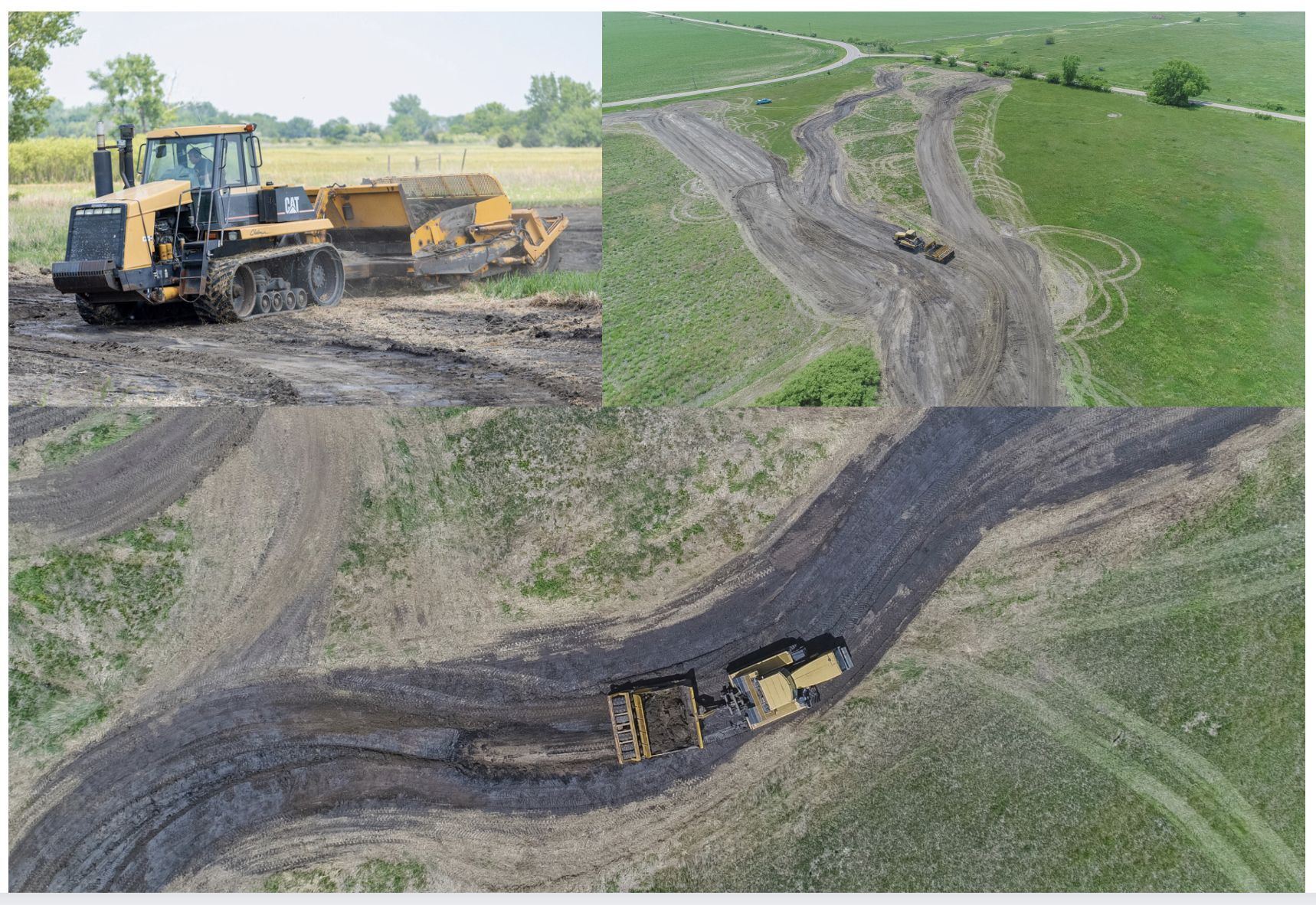
Matt Urbanski, Saunders Conservation Fellow, back with a look at our current slough restoration. My first experience at the restoration zone was with a camera in hand. I watched and documented as a massive tractor with tank-like treads pulled a trailer filled with sediment. This trailer was scraping sediment off the ground where the slough would eventually reside. Sadly, I was not allowed to operate the heavy machinery, so I flew a drone above and am providing you with this slough's story instead.
A Slough?
You might be asking yourself, “What is a slough?” Well, a Slough is a side channel that connects to a river and feeds or is fed by that river. In our case, these sloughs are connected to the Platte River and many are groundwater fed. These groundwater fed sloughs stay filled even when the river dries up and do not freeze over in the winter.
How To
There are four main steps we follow in slough restoration:
1.) Remove trees to restore the prairie
2.) Remove high spots and fill in man made channels by moving sediment with a belly scraper and excavators
3.) Scrape out sediment mimicking natural historical slough patterns using the same heavy machinery and disk to smooth it out, if needed
4.) Reintroduce native vegetation with a drop seeder or other means
Why Restore It?
Part of the Crane Trust’s mission uses land management to protect and restore the hydrology of the Big Bend reach of the Platte River. By restoring sloughs we are restoring the cohesion of the water systems in the Central Platte River Valley. Creating more hydrologically connected habitat positively impacts the Whooping Cranes, Sandhill Cranes, and other migratory birds. In addition to birds, some fish use sloughs as spawning grounds and many seek refuge in them when the river runs low. Sloughs are also critical habitat for many fish species, such as the at-risk Plains Topminnow (Fundulus sciadicus). Native plants surrounding the slough will also benefit since some of them require specific habitat between the waterway and lowland prairie to sprout. A couple plant species that will benefit from this restoration include cardinal flowers (Lobelia cardinalis), which are a species of conservation concern, and great blue lobelia (Lobelia siphilitica). One additional benefit is that in the winter animals benefit from having a water source that does not freeze over in groundwater fed sloughs.
Goals
The goal of this restoration is to bring the area closer to its historic hydrological state. Before damming became prevalent there were thousands of sloughs in the Central Platte River Valley, but now we aim to pursue a future where several hundred sloughs have been brought back to life. Our work, the work of other conservation organizations (Click here to see our community partnerships), and the work done by landowners is all helping us inch closer to this future goal.
I hope you enjoyed learning about our slough restoration currently underway at the Crane Trust!
I’ll see you in the next blog,
Matt Urbanski, Saunders Conservation Fellow
Have questions? Email me at murbanski@cranetrust.org!

